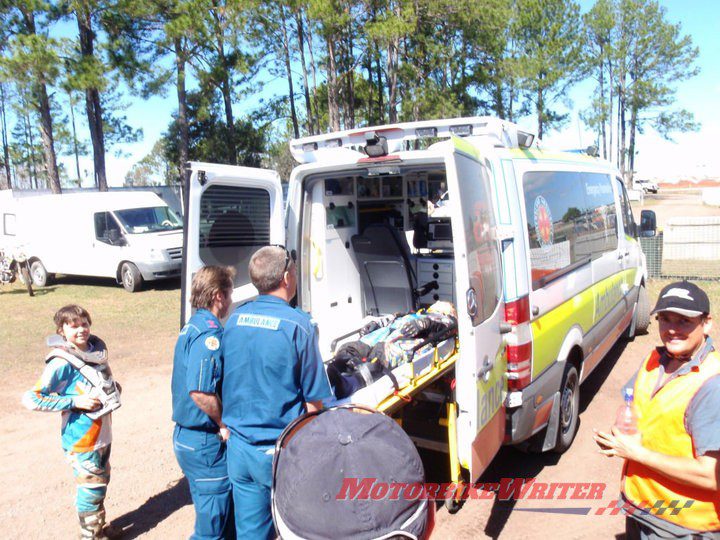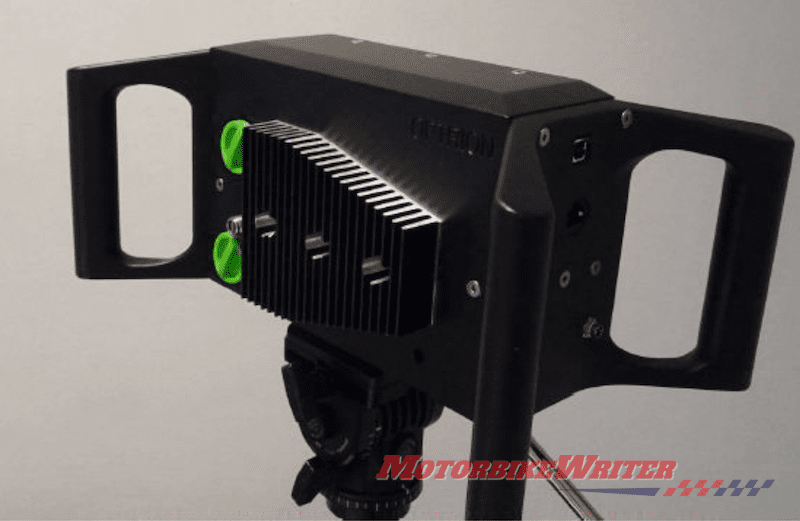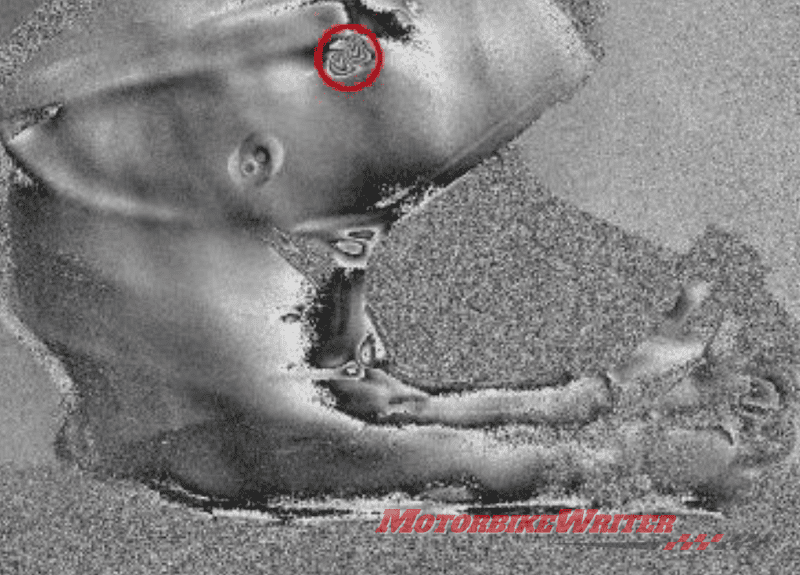Riders may soon have peace of mind their helmet is safe to use after a drop or crash, thanks to a new invention that uses a laser to scan your helmet.
The Helmet Doctors who developed the device now want to know if riders would pay $40 for the safety scanning service?
You can take part in their quick 10-question online survey by clicking here.
Early feedback on the poll shows strong support for a helmet scan service.
However, some riders have expressed concern that authorities could make such scanning services compulsory.
Why helmet integrity is important?

The Helmet Doctors is a family venture founded by Brayden Robinson and his father, Scott, of the Sunshine Coast.
“We grew up with the kids and me riding motocross and we would often see kids crash then continue to use their helmets which appeared to be unscathed,” Scott says.
“When Brayden was hospitalised with a fractured skull, we were shocked to see how good the helmet still looked.
“So we started looking for a better way to assure helmets are still in a safe condition after a crash.”

This led Scott and Brayden to invent a helmet laser-scanning technique with the help of a Belgian lab who primarily work in aeronautical and spatial technologies.
This Belgian experimental science lab develops, operates and makes solutions to improve the design, mechanical strength and durability, under a vibratory environment, of equipment and structures.
Scott and Brayden did extensive research and development with this Belgian company and with the help of the Composites Research Group in the School of Mechanical and Mining Engineering at The University of Queensland.
The father-and-son team investigated sound waves, x-rays and other non-destructive testing techniques.
“We found this laser scanning technique can categorically guarantee that, if there is any damage to the helmet’s outer shell, our technique will identify it.
“It’s ground-breaking, proven science.”

The Helmet Doctors have a Patent Cooperation Treaty (PCT) application that allows them to enter their patent application into any of 152 jurisdictions by 23 June 2020. At present the application has been examined by the international PCT body and all but one claim has been found to be novel over identified existing technology .
The Helmet Doctors are keen to turn this into a commercial venture.
How the scan works
Scott says very few riders know exactly when to replace their helmet.
But what if you drop it or have a crash?

“We have all heard how if you drop your helmet once you should replace it. But very few do this,” Scott says.
“No one knows how much impact a composite helmet can tolerate before the shell is critically weakened.
“Composite materials have many layers and tiny fibres that can be damaged in a fall.
“The impact energy is dispersed among the fibres and away from the brain which it is designed to do.
“This is why a dropped helmet may still look ok.
“However, the impact could have led to a small crack or splintering which you can’t see with the naked eye.
“Our device can view, read and record the helmet 100,000 times better than the naked eye and find if there are any cracks, splintering or deformations which would make the helmet defective and unable to withstand another impact.”
Helmet-scanning scheme
The Helmet Doctors plan to test their service first in South East Queensland.
Riders would take their helmet to a participating motorcycle dealer where they would leave it and pick it up a few days later.
The helmet would be sent to the nearest scanner depot where it would be scanned, assessed and returned.
Scott says the Federal Government is considering some funding for the safety service but needs to know if it would be well received by riders, racers and the motorcycle industry.
“As you could imagine this experimental laser camera is very expensive, but our goal is to make this service accessible and cheap enough for everyone to use it,” Scott says.
If the project is successful, they hope to extend the service to other states and overseas.
If you have a few minutes, click here to take this short 10-question survey and help the Helmet Doctors.


